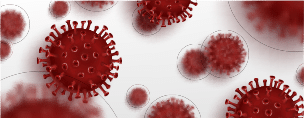How does Coronavirus Spread?
In response to many questions and concerns, we want to provide you with some information regarding the spread of COVID-19 (Coronavirus). We need to make sure and continue to stress the importance of social distancing, and taking precautions to protect you and your loved ones.
Below is the ways we currently know how the virus spreads as well as the recommendations from the Center of Disease Control and Prevention on how to prevent the spread of the Coronavirus. We are learning more about this virus everyday and will continue to work to update our patients and staff with new information. While this may be the new normal for us for the next few weeks, in time this will pass. Until then SMART Health and Wellness are committed to doing our best to provide you with the most up to date information as well as assist you through this public health emergency.
For more information regarding the Coronavirus please visit our Coronavirus Webpage: Coronavirus and Mental Health
Here is how the virus spreads and what we know so far:

1) Most common form of coronavirus spreading:
COVID-19, a coronavirus, is most commonly spread when an infected individual coughs or sneezes and produces respiratory droplets, which are then inhaled by a nearby individual who is in close contact (within 6 feet).

2) A less common way coronavirus spreading:
A less common mode of transmission can be virus particles on hard surfaces which an individual then touches the surface and then touches their eyes, nose, or mouth.

3) At this time there is no evidence that the virus is spread by food.

4) The virus does not live in the air indefinitely. Currently, scientists suggest that Coronavirus can only live on the droplets released into the air for up to a few hours. This may be even less time in warmer or higher humidity areas.

5) If a suspected case were to come into the clinic, only staff with prolonged contact such as that which occurs in the process of direct patient care activities have elevated risk. Just being in the building or even brief interactions at a distance of 6 feet are considered low risk

